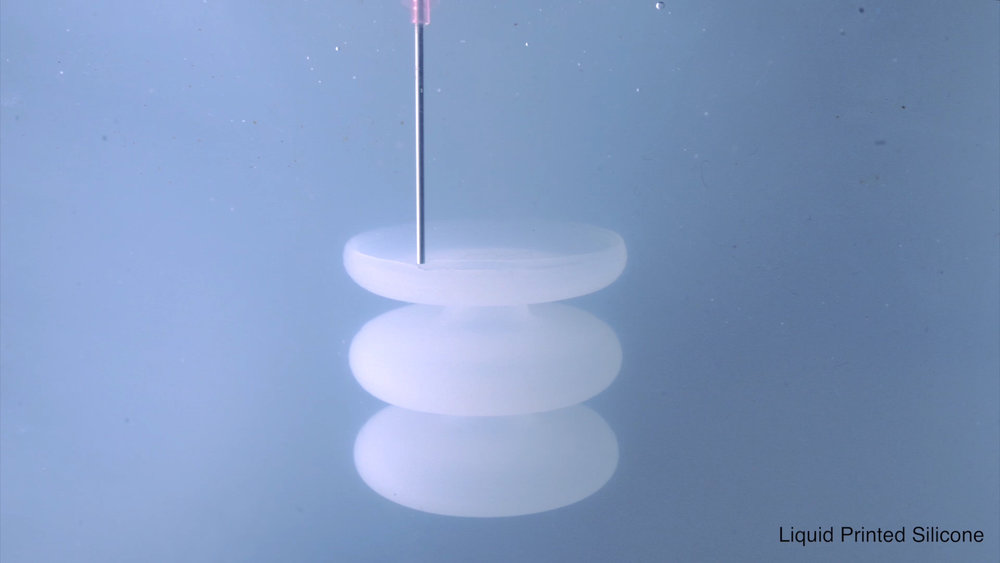Skylar Tibbits, who coined the term 4D printing back in 2013, and his team at MIT’s Self-Assembly Lab have released the details of an ongoing collaboration with car manufacturer BMW.
Named Liquid Printed Pneumatics, the project applies the Self-Assembly Lab’s “Rapid Liquid Printing” technique to the development of next generation car interiors, capable of taking on any shape and size.
Liquid Printed Pneumatics from Self-Assembly Lab, MIT on Vimeo.
Rapid Liquid Printing
Rapid Liquid Printing was introduced by the Self-Assembly Lab through a 2017 collaboration with UK-based furniture and interior design company Steelcase.
Made to challenge the speed, size and materials selection of current 3D printing techniques, Rapid Liquid Printing takes place inside a vat of silicone.
In this vat, a needle-like nozzle injects a continuous stream of liquid ink which when exposed to UV light, cures into a solid.
Afterwards, post-processing of the liquid printed part is relatively easy – it simply needs to be removed from its silicone support vat.
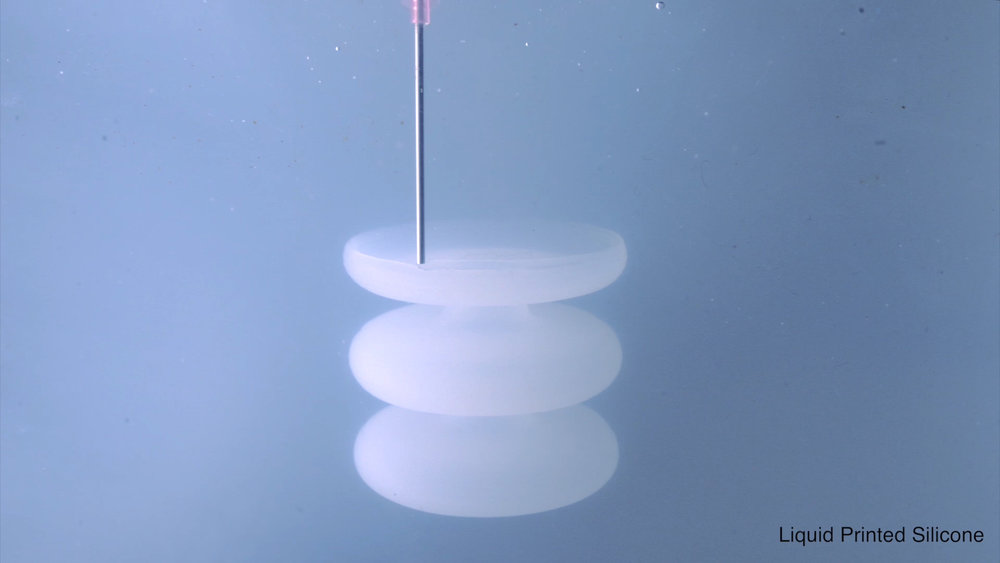
Actuator 3D printed by Rapid Liquid Printing. Photo via MIT Self-Assembly Lab
Liquid Printed Pneumatics
An extension of the Rapid Liquid Printing method, Liquid Printed Pneumatics are the first 3D printed inflatables that can, to quote the demo video “expand and morph into nearly any shape or function.”
Similar to 4D printed objects, Liquid Printed Pneumatics are programmed by design to take on a desired shape when stimulus is applied. In this case, this stimulus is filling with air.
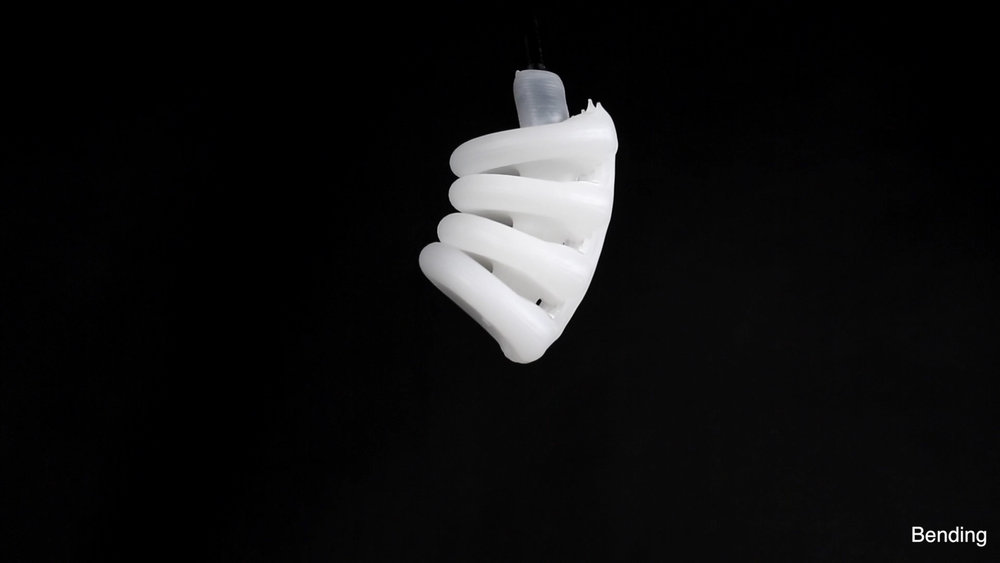
Printed inflatable bends… Photo via MIT Self-Assembly Lab
By altering the design of each inflatable, the researchers can achieve different levels of flexibility and stiffness as necessary.
At present, Liquid Printed Pneumatics is just a concept, but as cars continue develop and adapt, it is easy to see how such an idea could be applied to future vehicles.
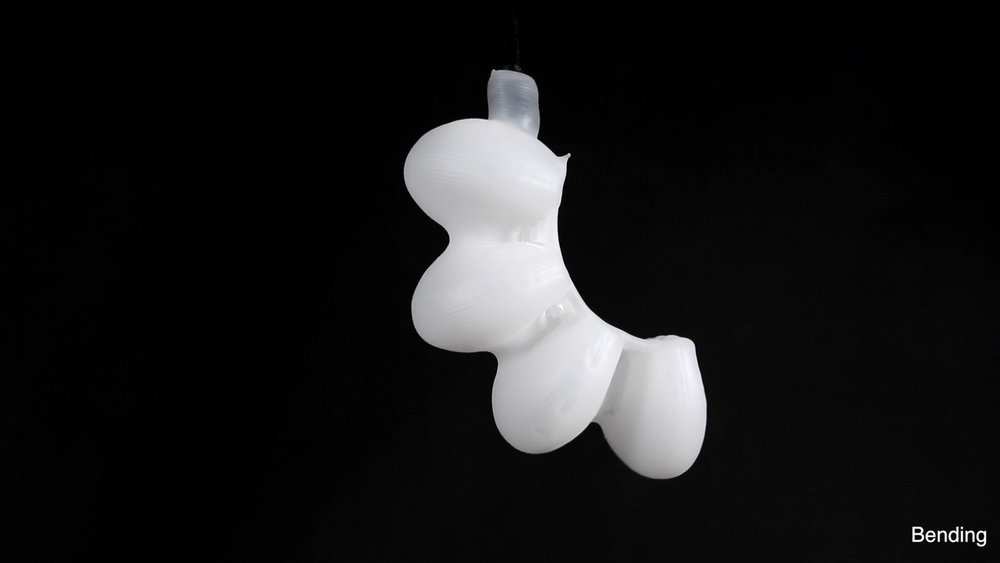
…and stretches. Photo via MIT Self-Assembly Lab
Next generation vehicles
For many, an autonomous vehicle revolution is inevitable. If that does turn out to be true, car interiors will be much more versatile spaces than they are now.
In some concepts, cars will become more like “mobile living spaces.”
The Self-Assembly Lab’s inflatables in particular could help improve passenger comfort, or be used to redesign airbags.
Through 4 November 2018 the Liquid Printed Pneumatics project will be on display in the U.K. at the V&A Museum as part of The Future Starts Here exhibition.
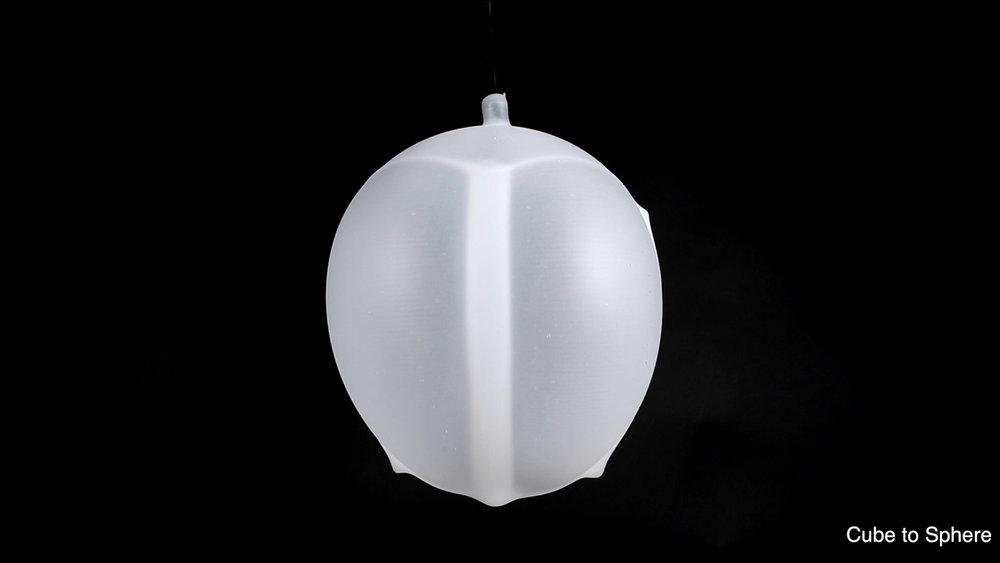
3D printed pneumatic inflates from cube shape to a sphere. Photo via MIT Self-Assembly Lab
Subscribe to the 3D Printing Industry newsletter for updates on the latest innovative applications across the arts and automotive.
Prefer social media? You can also follow the 3D Printing Industry Twitter and like us on Facebook.
Sign up to 3D Printing Jobs to seek out new opportunities in this rapid evolving industry.
Featured image shows Liquid Printed Pneumatics. Photo via MIT Self-Assembly Lab
